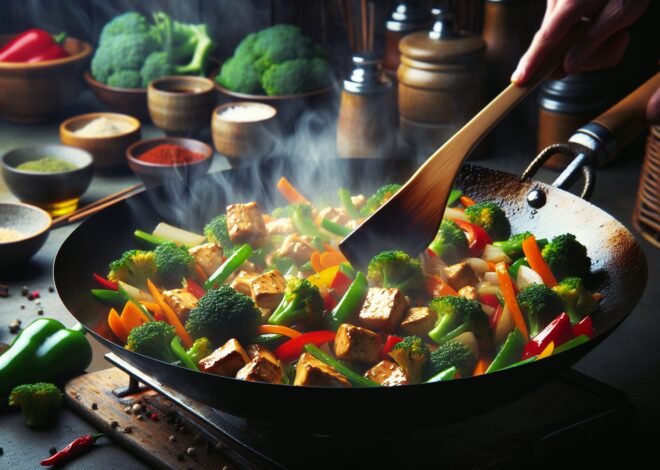
Best Flour Types for Baking: When to Use Which Flour
Best flour types for baking can significantly impact your culinary results, with each type serving a unique purpose. From all-purpose to bread and cake flours, understanding when to use each can transform your baking from good to exceptional. Did you know that using the wrong flour can alter texture and flavor dramatically? This post will guide you through the essential types of flour, helping you choose the right one for each recipe, ensuring your baked goods are always top-notch. Dive in to discover the insights that can elevate your baking skills to a professional level.
Understanding Different Types of Flour for Baking
Flour is the backbone of baking. Choosing the right type can elevate your culinary creations. Each flour type has unique characteristics that influence texture, flavor, and rise. This section explores some of the most common flours and their best uses in baking.
All-Purpose Flour Uses and Benefits
All-purpose flour is a versatile staple in many kitchens. It strikes a balance between softness and strength, making it suitable for a wide range of recipes. This flour type typically contains 10-12% protein, offering enough gluten for a chewy texture without being too dense.
Benefits of All-Purpose Flour:
- Versatility: Suitable for cookies, cakes, muffins, and more.
- Availability: Easy to find in most grocery stores.
- Cost-Effective: Affordable compared to specialty flours.
Common Uses:
- Cookies: Provides a perfect balance for chewy and crispy textures.
- Quick Breads: Offers structure without overpowering the delicate flavors.
- Pancakes and Waffles: Ensures a fluffy texture with a slight chew.
When to Choose Bread Flour for Recipes
Bread flour is the go-to choice when aiming for a hearty, chewy texture. Its higher protein content, around 12-14%, is ideal for gluten development, which is crucial in bread making. This results in a superior rise and a chewy crumb.
Why Choose Bread Flour:
- High Gluten Content: Perfect for yeast-based recipes requiring strong structure.
- Enhanced Chewiness: Ideal for bagels and artisan bread.
- Improved Rise: Supports substantial lift in dough.
Best Applications:
- Yeast Breads: From sourdough to French baguettes, bread flour provides the necessary strength.
- Pizza Dough: Offers the elasticity and texture required for a classic crust.
- Pretzels: Achieves the signature chewy interior and crisp exterior.
Exploring Cake Flour for Delicate Textures
Cake flour is the secret to achieving tender, delicate cakes. With a lower protein content of 7-9%, it minimizes gluten formation, resulting in a finer crumb. Cake flour is often bleached, which affects the flour’s acidity and aids in setting the structure quickly.
Advantages of Cake Flour:
- Light and Airy Texture: Ideal for soft, tender cakes.
- Consistent Results: Delivers uniform texture and appearance.
- Enhanced Absorption: Allows for more liquid and fat, improving moisture.
Perfect Recipes:
- Angel Food Cake: Requires the lightness only cake flour can provide.
- Sponge Cakes: Benefits from the fine texture for an airy feel.
- Cupcakes: Ensures a soft bite and even crumb.
Specialty Flours for Unique Baking Needs
For those looking to experiment or accommodate dietary preferences, specialty flours offer exciting alternatives. Each flour type brings distinct flavors and textures to your bakes, expanding your baking repertoire.
Whole Wheat Flour for Healthier Baking
Whole wheat flour incorporates the entire grain, providing more nutrients and fiber than white flour. It boasts a nutty flavor and denser texture, making it a healthier but slightly heavier choice.
Health Benefits:
- Rich in Nutrients: Offers more vitamins, minerals, and fiber.
- Lower Glycemic Index: Better for blood sugar control.
- Heart Health: Linked to lower cholesterol levels.
Best Uses:
- Bread: Adds depth and nutrition to sandwich loaves.
- Muffins: Provides a wholesome texture and flavor.
- Pasta: Enriches homemade noodles with a robust taste.
Gluten-Free Flours for Dietary Restrictions
Gluten-free flours cater to those with celiac disease or gluten intolerance. These flours are derived from various grains, nuts, and starches, each offering unique properties.
Types of Gluten-Free Flours:
- Rice Flour: Versatile with a mild flavor.
- Almond Flour: High in protein and healthy fats.
- Coconut Flour: Absorbs moisture, requiring recipe adjustments.
Key Considerations:
- Texture: Often needs binding agents like xanthan gum.
- Flavor: Some may have strong flavors that affect the final product.
- Nutrition: Varies significantly depending on the base ingredient.
Using Almond Flour for Low-Carb Baking
Almond flour is a popular choice for low-carb and paleo diets. Made from finely ground almonds, it is rich in protein and healthy fats, offering a moist and tender crumb.
Benefits of Almond Flour:
- Low Carbohydrate: Suitable for keto-friendly recipes.
- Nutrient-Dense: High in vitamin E and magnesium.
- Rich Flavor: Adds a nutty taste to baked goods.
Ideal Recipes:
- Tarts and Cookies: Provides a rich, buttery texture.
- Pancakes: Perfect for a fluffy, gluten-free breakfast.
- Cakes: Keeps them moist while reducing carb content.
Tips for Selecting the Right Flour for Your Bakes
Choosing the right flour can make a significant difference in your baking success. Understanding protein content and specific flour roles will guide you in achieving the desired results.
Comparing Protein Content in Various Flours
Protein content in flour affects gluten strength and texture. Knowing this helps in selecting the right flour for your baking needs.
Protein Content Guide:
- Cake Flour: 7-9% protein for tenderness.
- All-Purpose Flour: 10-12% for versatility.
- Bread Flour: 12-14% for strength and chew.
Impact on Baked Goods:
- Higher Protein: More gluten, chewier texture.
- Lower Protein: Less gluten, softer crumb.
The Role of Flour in Yeast-Based Baking
Flour plays a critical role in yeast-based baking. It provides the structure and elasticity needed for dough to rise and hold its shape.
Flour Functions:
- Gluten Formation: Supports dough structure and rise.
- Fermentation: Influences flavor through yeast interaction.
- Elasticity: Allows dough to expand without tearing.
Choosing the Right Flour:
- Bread Flour: Best for elastic dough and chewy texture.
- All-Purpose Flour: Suitable for softer, less chewy bread.
- Whole Wheat Flour: Offers denser, more flavorful bread.
Best Storage Practices for Maintaining Flour Freshness
Proper storage is essential to maintaining flour quality and freshness. Exposure to air, moisture, and pests can degrade flour quickly.
Storage Tips:
- Airtight Containers: Prevents moisture and pest infiltration.
- Cool, Dark Place: Slows down the oxidation process.
- Freezer Storage: Extends shelf life, especially for whole grain flours.
Signs of Spoilage:
- Off Odor: Indicates rancidity.
- Discoloration: Suggests contamination.
- Clumping: Points to moisture exposure.
Selecting the right flour and storing it correctly ensures baking success. Whether you’re making bread, cakes, or specialty items, understanding flour’s role can enhance your creations. Explore different flours to expand your baking horizons and find what works best for your recipes.
Conclusion
Different types of flour are crucial for various baking outcomes. All-purpose flour is the most versatile, suitable for a range of baked goods. Bread flour, with a higher protein content, is ideal for chewy, elastic breads. Cake flour’s low protein content makes it perfect for tender, soft cakes. Whole wheat flour adds a denser texture and nutty flavor to baked items.
FAQ
What are the best flours for baking bread at home?
For baking bread at home, bread flour is a top choice due to its high protein content, which results in a chewy texture and excellent structure. All-purpose flour also works well for softer breads. For added flavor, whole wheat flour or rye flour can be used in combination with other flours.
How do you choose the right flour for cake baking?
Cake flour is ideal for baking cakes due to its low protein content, which creates a tender and fine crumb. All-purpose flour can also be used for denser cakes. Consider the flavor profile and texture you desire for your cake when choosing the flour.
Which type of flour is best for gluten-free baking?
Almond flour, rice flour, and coconut flour are popular choices for gluten-free baking. These flours require binding agents like xanthan gum or eggs to mimic gluten’s elasticity. Experiment with blends to achieve desired textures in gluten-free recipes.
What is the difference between all-purpose flour and whole wheat flour in baking?
All-purpose flour is refined and has a moderate protein content, making it versatile for various baked goods. Whole wheat flour contains the entire grain, offering more fiber and nutrients but can result in denser baked items. Using a mix of both flours can balance taste and texture.
Can pastry flour be used for making cookies?
Pastry flour can be used for cookies, resulting in a delicate and tender texture. It is lower in protein than all-purpose flour, so it works well for soft cookie recipes. For crispier cookies, combine it with all-purpose flour.
How does using almond flour affect baking results?
Almond flour adds moisture and a slightly nutty flavor to baked goods. It lacks gluten, which can alter texture, making it denser and softer. It is excellent for gluten-free recipes but may require adjustments in liquid and leavening agents.











